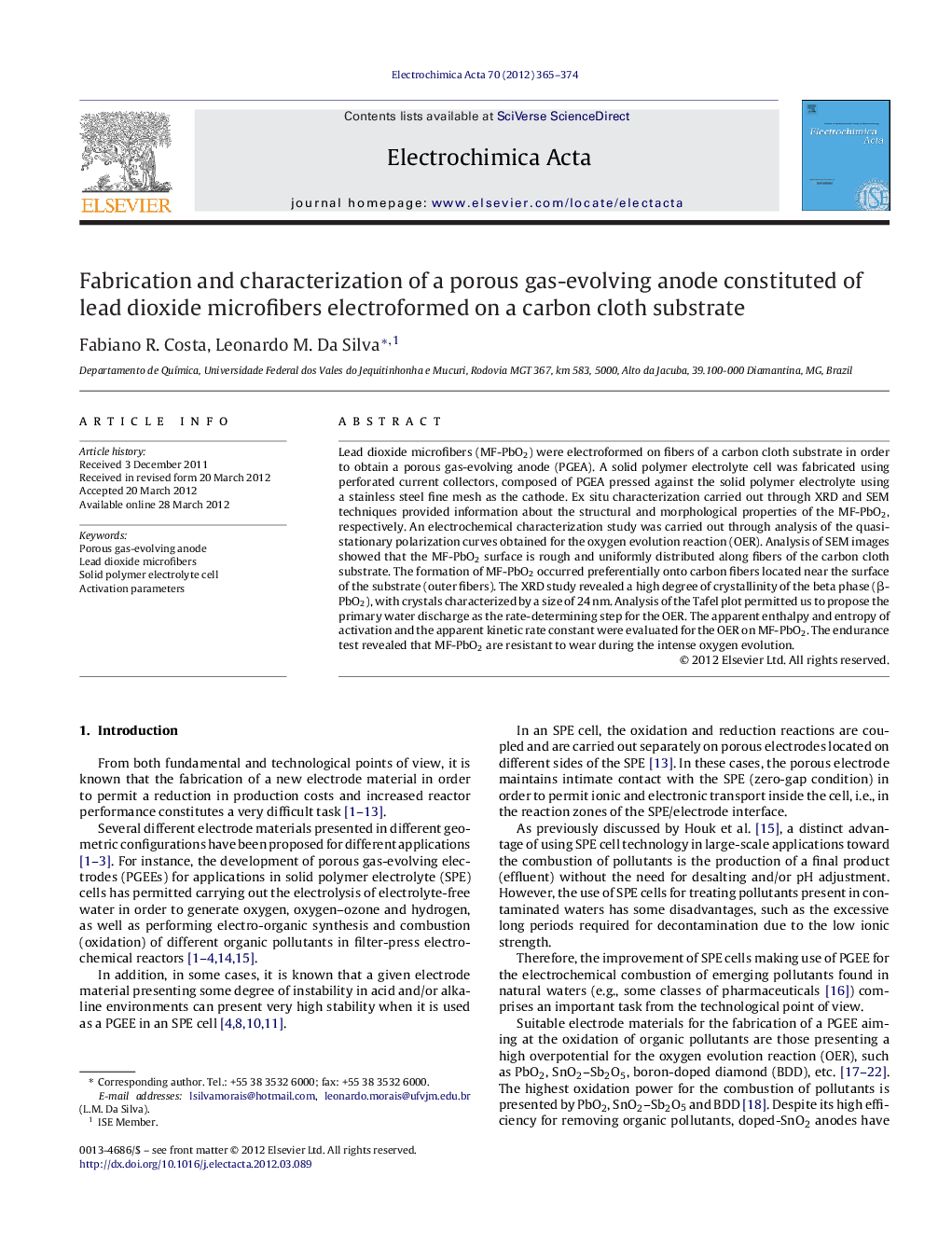| Article ID | Journal | Published Year | Pages | File Type |
|---|---|---|---|---|
| 188420 | Electrochimica Acta | 2012 | 10 Pages |
Lead dioxide microfibers (MF-PbO2) were electroformed on fibers of a carbon cloth substrate in order to obtain a porous gas-evolving anode (PGEA). A solid polymer electrolyte cell was fabricated using perforated current collectors, composed of PGEA pressed against the solid polymer electrolyte using a stainless steel fine mesh as the cathode. Ex situ characterization carried out through XRD and SEM techniques provided information about the structural and morphological properties of the MF-PbO2, respectively. An electrochemical characterization study was carried out through analysis of the quasi-stationary polarization curves obtained for the oxygen evolution reaction (OER). Analysis of SEM images showed that the MF-PbO2 surface is rough and uniformly distributed along fibers of the carbon cloth substrate. The formation of MF-PbO2 occurred preferentially onto carbon fibers located near the surface of the substrate (outer fibers). The XRD study revealed a high degree of crystallinity of the beta phase (β-PbO2), with crystals characterized by a size of 24 nm. Analysis of the Tafel plot permitted us to propose the primary water discharge as the rate-determining step for the OER. The apparent enthalpy and entropy of activation and the apparent kinetic rate constant were evaluated for the OER on MF-PbO2. The endurance test revealed that MF-PbO2 are resistant to wear during the intense oxygen evolution.
► Lead dioxide microfibers electroformed onto fibers of a carbon cloth substrate. ► No previous studies reporting the use of lead dioxide microfibers in an SPE cell. ► The resulting porous gas-evolving anode is resistant to the erosion and/or corrosion processes during the intense gas evolution. ► The anode composed of lead dioxide microfibers presents a very high overpotential for the oxygen evolution reaction.
